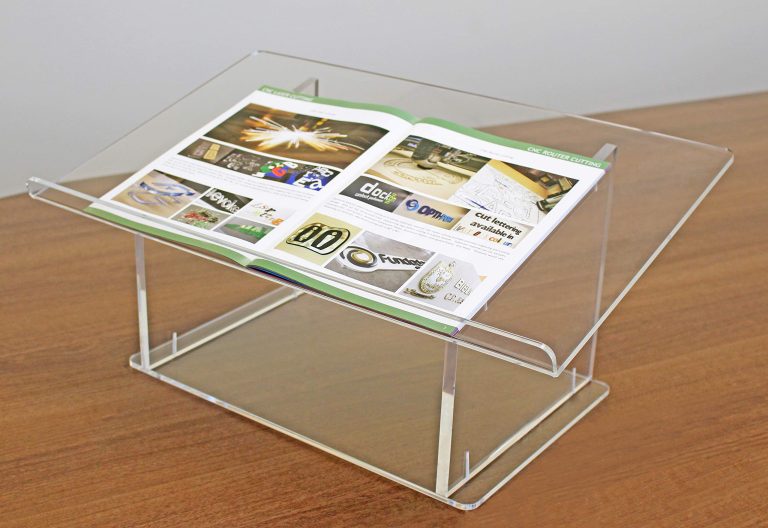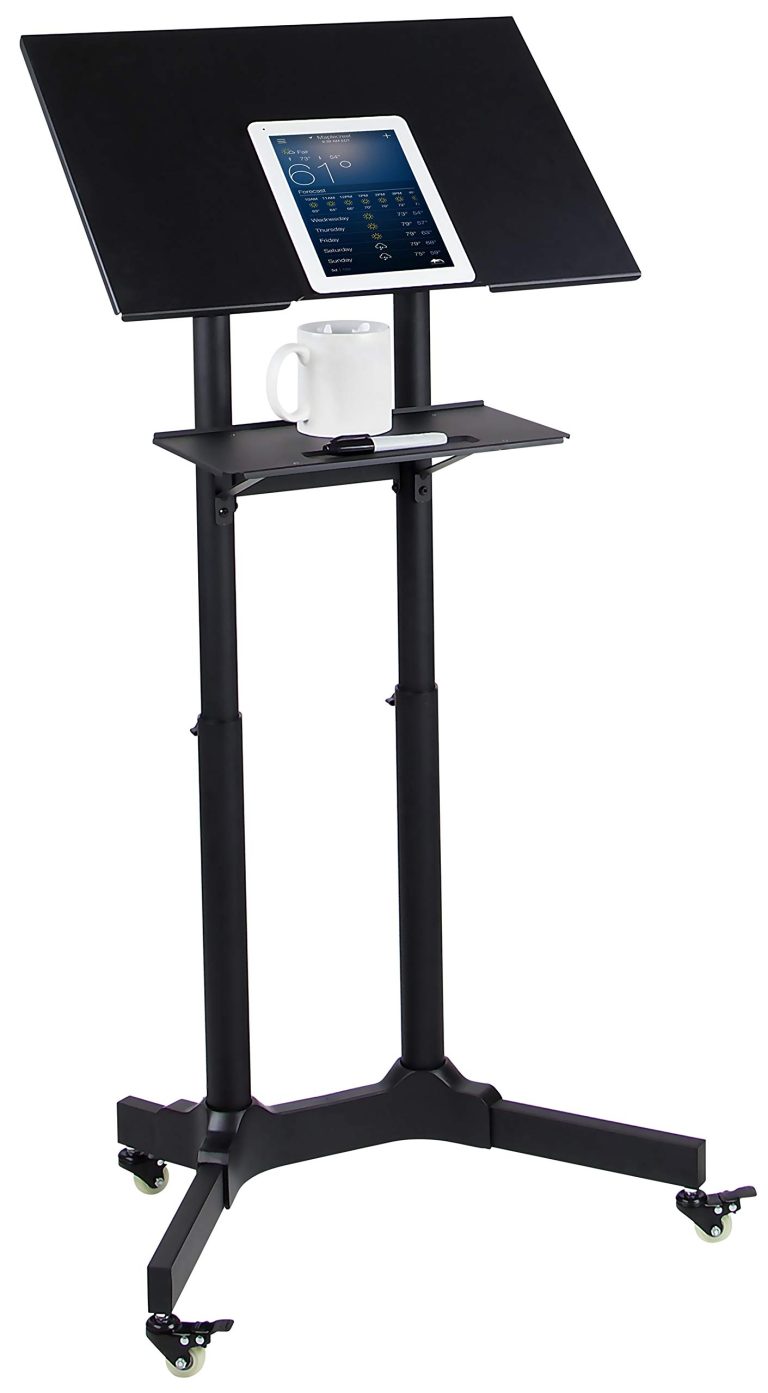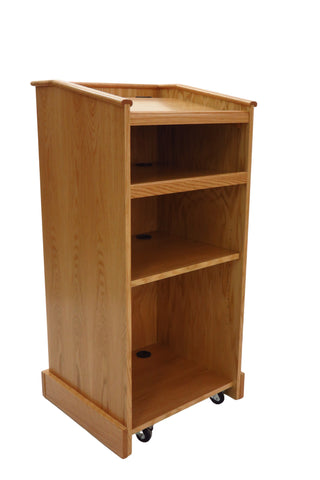Lectern Vs Dais: Key Differences and Best Uses Explained
Lecterns and daises are both used in public speaking. They serve different purposes.
Understanding the differences can help you choose the right one. A lectern is a small, stand-up desk. It holds notes or a book for a speaker. A dais, on the other hand, is a raised platform. It elevates speakers or guests above the audience.
Knowing when to use each can make your presentations more effective. This comparison will help you understand the benefits and uses of both. By the end, you will know which one suits your needs better. Let’s explore the key differences between a lectern and a dais.
Lectern Basics
A lectern is a fundamental piece of furniture found in many public speaking venues. It provides a surface for speakers to place their notes or devices. Understanding the design, structure, and common materials of a lectern can help in choosing the right one for your needs.
Design And Structure
The design of a lectern is simple yet functional. It typically includes a slanted top surface, which helps in holding papers or books securely. Some lecterns feature adjustable heights, allowing speakers to set it at a comfortable level. This feature is particularly useful in settings with multiple speakers of different heights.
Lecterns often come with additional features such as built-in microphones, lights, or even small storage compartments. These enhancements can improve the overall speaking experience, making it easier to deliver a clear and engaging presentation.
Common Materials
Lecterns are made from a variety of materials. Each material offers different benefits, affecting the look and durability of the lectern.
| Material | Benefits |
|---|---|
| Wood | Provides a classic and elegant appearance. Durable and sturdy. |
| Metal | Offers a modern look. Strong and often lightweight. |
| Acrylic | Gives a sleek, transparent design. Lightweight and contemporary. |
Choosing the right material depends on the venue and the desired aesthetic. Wood is great for traditional settings, while metal and acrylic are suited for modern environments.

Credit: www.quora.com
Dais Essentials
Understanding the essentials of a dais is crucial for effective event planning. A dais is a raised platform used during formal events, presentations, and ceremonies. It provides a focal point and elevates the speaker or honoree.
Design And Structure
The design of a dais varies depending on the event’s requirements. Generally, it is a simple, elevated platform. It can be rectangular, square, or even circular. The height of a dais is typically between 12 to 36 inches. The structure is sturdy to support multiple people.
Some designs include steps or ramps for easy access. Handrails may be added for safety. The platform should be wide enough to accommodate several people comfortably. It is often placed at the front of the room, ensuring visibility for the audience.
Materials And Build
Materials used in building a dais are crucial for durability. Common materials include wood, metal, and composite materials. Wooden dais platforms are popular for their classic look and feel. They are often used in traditional settings.
Metal and composite materials offer a modern appearance. These materials are also lightweight and easy to transport. The platform’s surface is usually covered with carpeting or non-slip materials to prevent accidents.
For outdoor events, weather-resistant materials are essential. Aluminum and treated wood are ideal choices. They withstand various weather conditions and ensure the dais remains stable and safe.
Below is a table summarizing common dais materials:
| Material | Pros | Cons |
|---|---|---|
| Wood | Classic look, sturdy | Heavy, may require maintenance |
| Metal | Lightweight, modern appearance | Can be slippery without a cover |
| Composite | Durable, easy to transport | May be more expensive |
Key Differences
Understanding the key differences between a lectern and a dais can help you choose the right one for your event or presentation. Both serve different purposes and come with unique features. In this section, we will explore their functionality and usage scenarios to help you make an informed decision.
Functionality
A lectern is a stand used to hold notes, books, or tablets for speakers. It allows the speaker to stand behind it and read or reference materials while speaking.
A dais is a raised platform where speakers or honored guests stand or sit. It elevates them above the audience for better visibility and prominence.
Here’s a quick comparison table:
| Feature | Lectern | Dais |
|---|---|---|
| Purpose | Holds notes and materials | Raises speakers or guests |
| Placement | On the floor | Elevated above the floor |
| Visibility | Limited to speaker | Enhanced audience visibility |
Usage Scenarios
A lectern is ideal for classrooms, conference rooms, and lecture halls. It provides a stable surface for speakers to keep their materials organized and accessible.
A dais is perfect for large events like graduations, award ceremonies, and formal gatherings. It ensures that the key speakers or guests are visible to everyone in the audience.
Consider these points before making your choice:
- Size of the event
- Number of speakers
- Audience size and layout
Choosing between a lectern and a dais depends on the specific needs of your event.

Credit: uk.pinterest.com
Best Uses
A lectern is perfect for presentations and speeches, offering a place to hold notes and maintain eye contact. A dais provides a raised platform for speakers or honored guests, enhancing visibility and presence during events.
Choosing between a lectern and a dais depends on the setting and the event type. Both serve specific roles and enhance different kinds of presentations. Understanding their best uses can help in deciding which one to opt for in various scenarios.Lectern Applications
A lectern is ideal for speaking events. It provides a stand for notes or devices. Lecterns are common in classrooms and lecture halls. They help keep the speaker organized. Corporate meetings also benefit from using a lectern. It creates a focal point for the presenter. Lecterns are portable and easy to set up.Dais Applications
A dais elevates speakers or guests. It is often used in formal events. Ceremonies and award shows use a dais to highlight individuals. It is also common in political and public events. A dais draws attention and adds importance. It can accommodate multiple people. This makes it great for panels and group discussions. “`
Credit: executivespeechcoach.blogspot.com
Frequently Asked Questions
What Is The Main Difference Between A Lectern And A Dais?
A lectern is a stand for speaking notes. A dais is a raised platform.
When Should You Use A Dais Instead Of A Lectern?
Use a dais for formal events. It highlights the speaker. Lecterns are for holding notes.
Can A Lectern And Dais Be Used Together?
Yes. A lectern can be placed on a dais. This combines benefits of both.
Conclusion
Choosing between a lectern and a dais depends on your event needs. A lectern suits speeches and presentations. A dais works well for ceremonies and panels. Both have their unique benefits. Think about your audience and setting. Match the right tool for the occasion.
This ensures a smooth and professional event. Understanding these differences helps in making better choices. Your event will be more organized and impactful. Happy planning!




